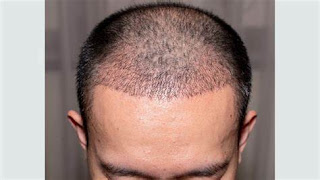Hair Transplant
Hair Transplant Treatment:
There are a number of ways to perform a hair transplant, which involves moving hair from one part of your head to another. Grafting is the most common method. You must have thicker areas of hair on your head to be a good candidate. There are numerous causes of permanent hair loss, including alopecia types.
A hair transplant is what?
A hair transplant is a procedure that moves hair to areas of the scalp that are bald or thinning. It is also known as hair restoration or hair replacement, and most people who use it have already tried other treatments for hair loss.Hair Transplant in Islamabad Hair transplants are carried out by dermatologists, who specialize in skin care, or plastic surgeons, who specialize in reconstructive surgery.
How is a hair transplant carried out?
Grafts, or small pieces of skin, are taken from areas of the body with healthy hair by the healthcare provider. The term "donor site" is used by healthcare professionals. Most of the time, it's on your head, near the back of your scalp, where your hair is usually the thickest. The grafts are moved by the doctor to the areas of the scalp without hair. The transplanted skin ought to keep growing hair after it heals.
What conditions can be treated with hair restoration surgery?
There are numerous causes of hair loss. Hair loss can be either temporary or permanent. Permanent hair loss can be treated with hair implants:
An autoimmune condition that attacks hair follicles is alopecia areata.
pattern baldness, or androgenic alopecia.
hormonal imbalances or thyroid diseases.
burns or traumatizing injuries.
Who is suitable for hair transplantation?
You might be a good candidate for hair transplantation if you:
are well-nourished.
Have realistic expectations regarding the results of hair replacement.
On your scalp, you still have areas of thick hair growth.
What kinds of hair transplant surgeries are there?
Hair transplant surgery can be carried out in a number of different ways, including:
Grafting.
Reduction of scales.
Surgery on flaps
Expansion of tissue.
How does grafting work?
Hair joining is the most widely recognized sort of hair relocate a medical procedure. A doctor or nurse removes tiny pieces of healthy hair from the scalp. Skin with 10 to 15 hairs can sometimes be removed with a small, round punch. These grafts were previously referred to as "hair plugs." There may be one to two hairs in a micro-graft.
The process can take a long time. The majority of patients remain awake throughout the procedure, despite receiving medication to numb the scalp. Depending on how much hair your provider needs to move, you may need multiple procedures. Between procedures, your scalp will need to heal for a few months.
How is the hair taken off of the scalp?
Alopecia reduction is another name for scalp reduction. A surgeon removes a small amount of the scalp's bald skin during this procedure. They release close by skin containing hair and pull it over the uncovered region. After that, they stitch it down.
The top and back of the head are particularly good candidates for scalp reduction. Typically, the skin around these sections is covered in hair. For full coverage, providers sometimes combine scalp reduction and hair implants. Scalp reduction, like grafting, typically only requires scalp numbing medication. As a result, you will not require general anesthesia.
What is the procedure for flap surgery?
If you have large areas of baldness near the front of your scalp, your surgeon may recommend flap surgery. Over a few weeks, flap surgery is carried out in several stages. Around the donor site, the surgeon makes superficial cuts on three sides. The original blood supply to the fourth side remains intact. The surgeon can cut the flap and lift it over bald areas with this method. General anesthesia is required for flap surgery.
How is expansion of tissue carried out?
Tissue expansion surgery may be performed by your provider if you have burn scarring or baldness on your scalp. Multiple steps are required for tissue expansion, which requires general anesthesia:
An implant is inserted under the scalp, where hair is still present, by a reconstructive surgeon. They call it a tissue expander because it looks like a balloon.
In order to stretch the skin, the expander is gradually inflated over several weeks.
The stretched skin is covered with a second procedure by the surgeon to cover the bald area.




Comments
Post a Comment